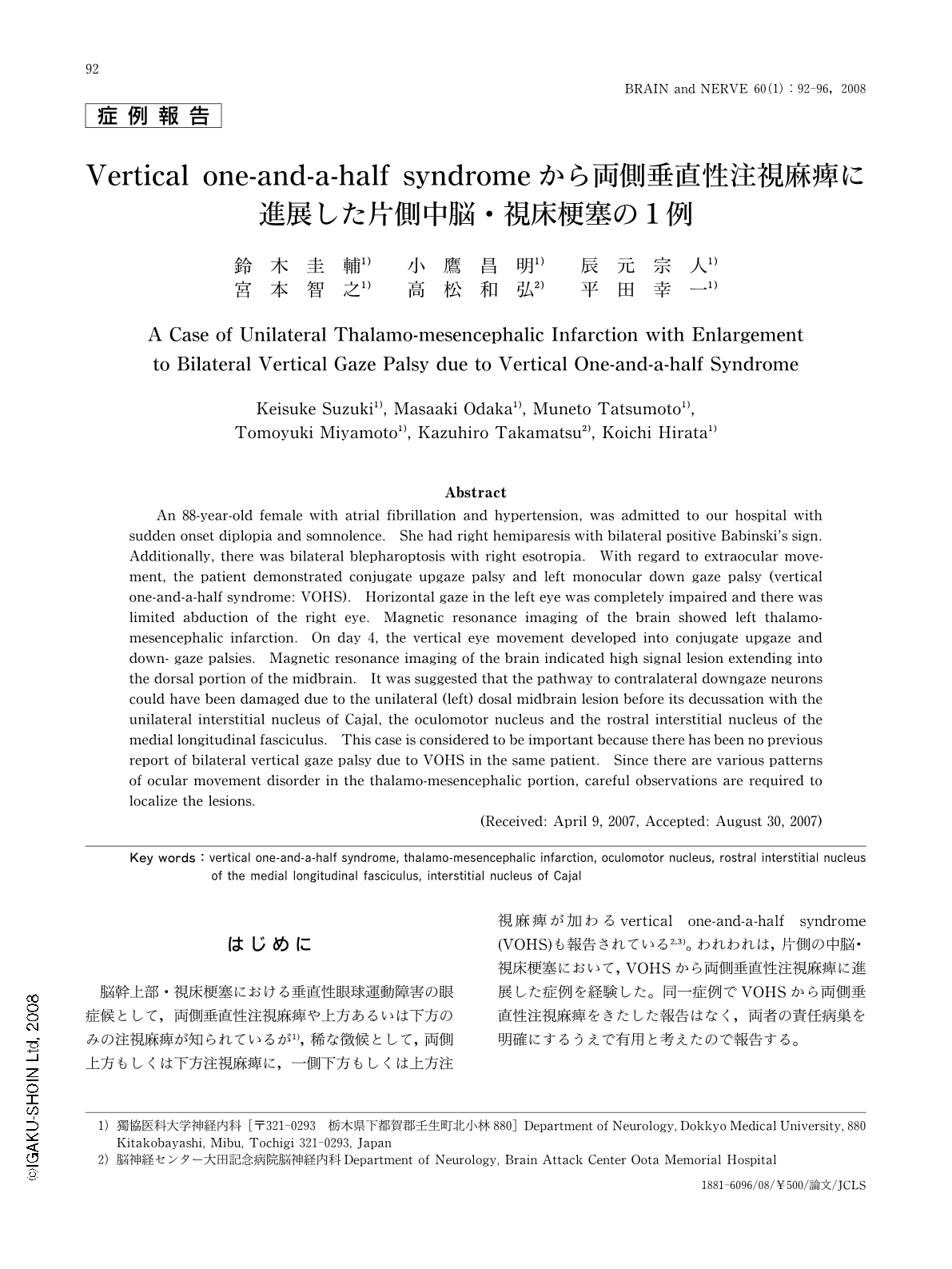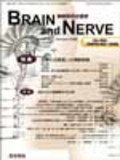Japanese
English
- 有料閲覧
- Abstract 文献概要
- 1ページ目 Look Inside
- 参考文献 Reference
はじめに
脳幹上部・視床梗塞における垂直性眼球運動障害の眼症候として,両側垂直性注視麻痺や上方あるいは下方のみの注視麻痺が知られているが1),稀な徴候として,両側上方もしくは下方注視麻痺に,一側下方もしくは上方注視麻痺が加わるvertical one-and-a-half syndrome (VOHS)も報告されている2,3)。われわれは,片側の中脳・視床梗塞において,VOHSから両側垂直性注視麻痺に進展した症例を経験した。同一症例でVOHSから両側垂直性注視麻痺をきたした報告はなく,両者の責任病巣を明確にするうえで有用と考えたので報告する。
Abstract
An 88-year-old female with atrial fibrillation and hypertension, was admitted to our hospital with sudden onset diplopia and somnolence. She had right hemiparesis with bilateral positive Babinski's sign. Additionally, there was bilateral blepharoptosis with right esotropia. With regard to extraocular movement, the patient demonstrated conjugate upgaze palsy and left monocular down gaze palsy (vertical one-and-a-half syndrome: VOHS). Horizontal gaze in the left eye was completely impaired and there was limited abduction of the right eye. Magnetic resonance imaging of the brain showed left thalamo-mesencephalic infarction. On day 4, the vertical eye movement developed into conjugate upgaze and down- gaze palsies. Magnetic resonance imaging of the brain indicated high signal lesion extending into the dorsal portion of the midbrain. It was suggested that the pathway to contralateral downgaze neurons could have been damaged due to the unilateral (left) dosal midbrain lesion before its decussation with the unilateral interstitial nucleus of Cajal, the oculomotor nucleus and the rostral interstitial nucleus of the medial longitudinal fasciculus. This case is considered to be important because there has been no previous report of bilateral vertical gaze palsy due to VOHS in the same patient. Since there are various patterns of ocular movement disorder in the thalamo-mesencephalic portion, careful observations are required to localize the lesions.
(Received: April 9, 2007, Accepted: August 30, 2007)

Copyright © 2008, Igaku-Shoin Ltd. All rights reserved.


